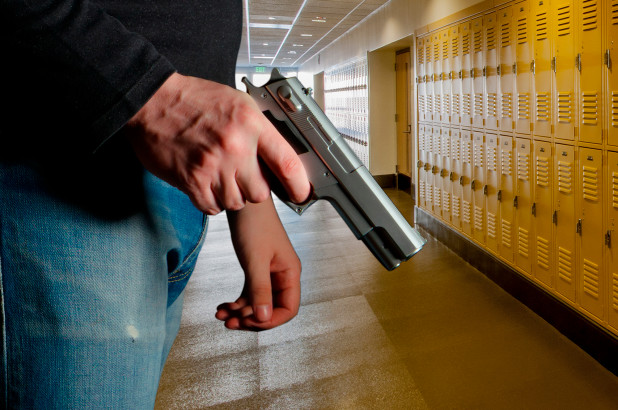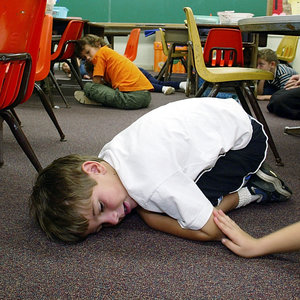School shootings have become so common that they barely raise our eyebrows. And yet the recent Parkland, Florida massacre seems to have touched a deeper nerve. While a handout co-authored by the FBI and National Center for the Analysis of Violent Crime (NCAVC) has reported that the odds are one in 1 million that a student will die as a result of a violent act (see “The School Shooter: A Quick Reference Guide”, co-authored by the FBI and National Center for the Analysis of Violent Crime (NCAVC)) , we conscientious parents wonder how safe our children are when we drop them off every morning.
The combination of easy access to guns, increasingly violent video games, increasing prevalence of mental health issues in children, is genuinely concerning. On top of this, the devastating breakdown in traditionally reliable threat response authorities, including the FBI’s failure to respond to the credible threat Nicolas Cruz posed, that the FBI admits they were not only informed about – but failed to follow up appropriately – reminds parents they need to take an active role in ensuring the safety of their children.
You first effective step to take is to study the scientifically identified variables highly associated with the school shooter.
This is not to say there is one psychological profile, because there is NOT. But there are definitely a group of characteristics that you and your child can learn to look out for and report to appropriate authorities.
Click on this School Shooter 1-page handout and take 10 minutes to review critical information you should review with your child to get your threat assessment up and running. This handout is based on several of the most comprehensive and reliable research projects that have been conducted by the FBI as well as the Secret Service and NCVAC.
It is critical you raise your child’s awareness of the kinds of characteristics to look for and report to school officials AND to you. Just as was true with the peers of Nicolas Cruz, students have the best on-the-ground intelligence that needs to be acted upon in a timely manner.
I have conducted threat assessments for school systems, and you need to make sure your school has a person who takes chief responsibility for assessing whether an outside professional (usually a psychologist with forensic experience) needs to conduct an in depth threat assessment.
Highlights from the handout with quick tips for you:
— 93% of attackers engaged in some behavior prior to the attack that caused others to be concerned (Tip: Educate your child on the statistics and warning signs this handout discusses. Make sure they understand who they should talk with and how quickly they should talk with that person.)
— 93% of attackers planned out the attack in advance (Tip: Make sure your student is aware that they should immediately report any students discussing aggressive intentions toward the school or any member of the school.)
— 68% acquired the weapon used from their own home or that of a relative (Tip: If you are a gun owner, make sure that you responsibly secure all of the weapons in your household and none are accessible by immature or irresponsible parties. Remember, the more mental health issues your child has, or problems with impulsivity or aggression, the more the weapons need to be locked away.)
— 75% of school shooters felt bullied, persecuted or threatened by others (Tip: Make sure your child is appropriately communicative with you regarding any students who are being bullied, or who appear to harbor significant anger or discuss thoughts of aggressive vengeance toward school officials or other students. On this note, 61% of school shooters were motivated by a desire for revenge. Teach your child to look out for students who are being bullied and to make appropriate reports to school officials. As the FBI report indicates, in schools where there is an unofficial Code of Silence where students do not talk to school staff, can be a factor that makes a school shooting more likely. (Tip: Talk with your student about to what degree there appears to be an unhealthy Code of Silence at their school.)
Click on the more comprehensive report entitled “The School Shooter: A Threat Assessment Perspective”, co-authored by the FBI Academy, NCVAC, and Critical Incident Response Group (CIRG). This report has vital information regarding three prongs related to school shooting behavior:
— Prong 1: Personality Traits and Behavior
— Prong 2: Family Dynamics
— Prong 3: School Dynamics
Finally, you should know that a “threat assessment” is a credible and evidence-based kind of assessment traditionally conducted by highly trained psychological professionals such as psychologists. The new benchmark for appropriate knowledge of threat assessment is for schools to be aware of, at least, the material in the Prong 3 noted above. You should feel free to forward to your schools counselor this report such that they are aware of this information. Unfortunately, schools often avoid requiring students to undergo a threat assessment, because they fear upsetting parents. But in this day and age, if particular and credible threat variables are present, schools must handle this professionally by having a psychologically trained professional conduct the threat assessment. Those variables are outlined in the comprehensive FBI threat assessment perspective report.
Remember, if there is any ambiguity about what needs to be done, on the part of your student, the school, or a parent, consult a forensic psychologist. To find one in your area, Google “forensic psychologist” and the name of your area. There is as much risk in not doing anything as there is with doing something. Lives may be at stake.


